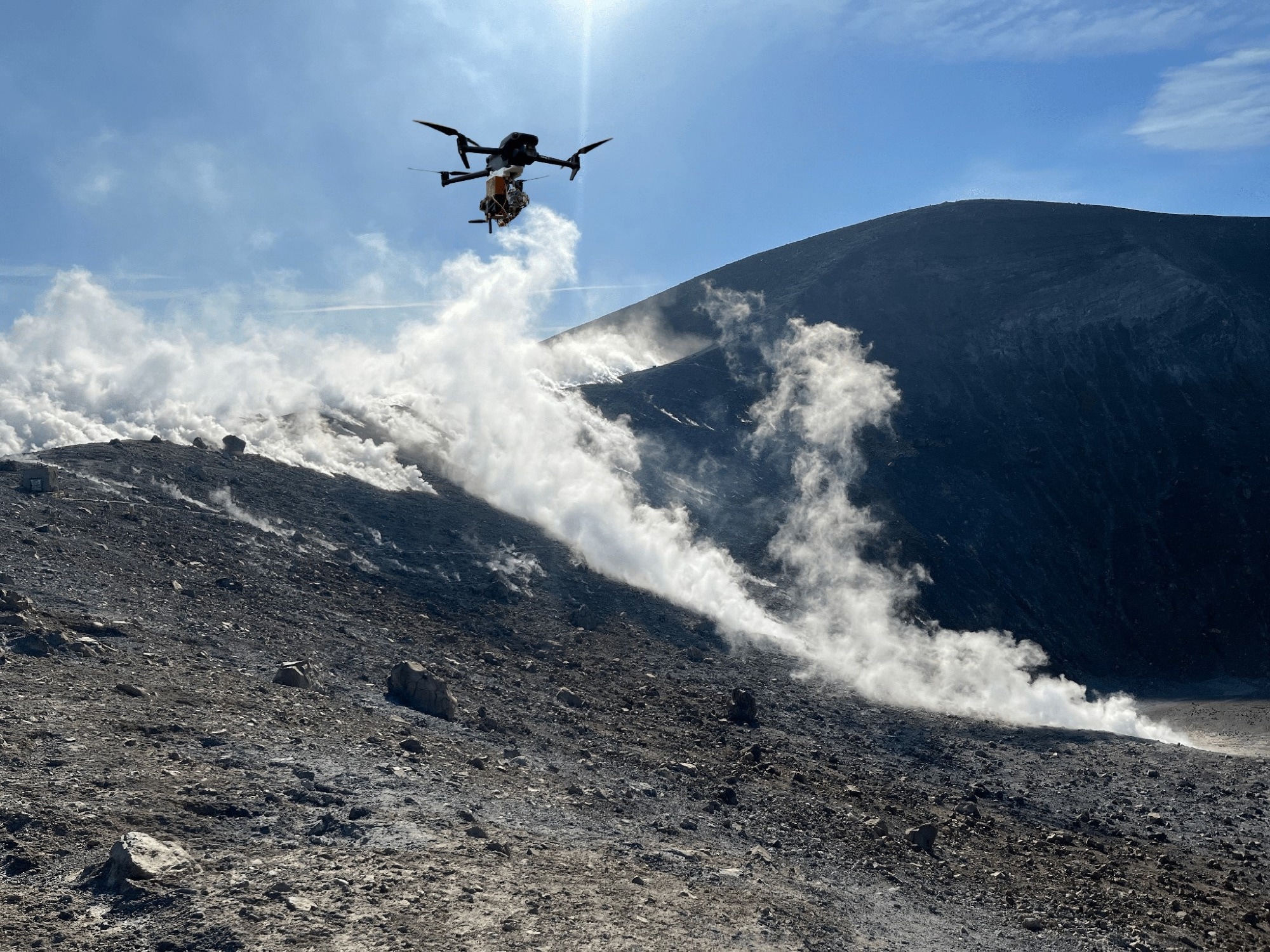Volcanoes mostly release water vapor, carbon dioxide, and sulfur dioxide. Investigating these gases is one of the most effective ways to learn about volcanic systems and the magmatic processes that are taking place. Even the possibility of an impending eruption can be determined by the ratio of carbon dioxide to sulfur dioxide levels. Drones are used to transport analytical systems to the place of activity.
 The research drone in action on the island of Vulcano at the southern boundary of the Aeolian Islands. Image Credit: Hoffmann Group
The research drone in action on the island of Vulcano at the southern boundary of the Aeolian Islands. Image Credit: Hoffmann Group
However, due to their size, transporting drones to their operational sites has been extremely expensive. Professor Thorsten Hoffmann of Johannes Gutenberg University Mainz (JGU) recently assessed the feasibility of employing a tiny, portable observation drone in distant areas.
Even difficult-to-reach areas can be reached by this incredibly small drone system when transported on foot. Furthermore, it necessitates only a little flight and administrative preparations for use as an aerial observation platform.
Eruptions Predicted Based on Volcanic Outgassing
Volcanic gas emissions primarily consist of water vapor, carbon dioxide, and sulfur dioxide. Released gas emissions are one of the few chemical signals that can be used to detect events taking place in magmatic systems that are otherwise inaccessible.
For some time, experts have hypothesized that analyzing such volatile emissions could enhance volcanic eruption prediction. The ratio of carbon dioxide to sulfur dioxide concentration in emitted gases is a particularly interesting criterion for monitoring changes in volcanic activity. Changes in this ratio have been seen immediately before the eruptions of several volcanoes, including Etna.
The practical aspect of gathering a continuous time series of gas compositions, however, poses a significant obstacle. Direct manual sampling by ascending the volcano is difficult and time-consuming, not to mention dangerous if an eruption occurs unexpectedly. Stationary monitoring equipment, on the other hand, frequently does not record representative data on gas compositions, owing to fluctuating wind directions.
Drone measurements can overcome these issues and have already been used to assess the chemical properties of volcanic gases. The increased distances involved, in particular, reduce the possibility of volcanologists being threatened by rapid shifts in volcanic activity.
Furthermore, drones allow access to emission sources that would otherwise be difficult or impossible to reach, such as fumaroles on steep, slippery terrain or older parts of the plume that are often found in downwind areas and at higher altitudes. Only larger drones have been used for volcano monitoring, which has proven challenging given the remoteness of the locations where most volcanoes may be found.
It is for this reason that small, easily transportable drones are an essential prerequisite if we want to get to isolated or difficult-to-access volcanic sites and suitably track the activity there.
Niklas Karbach, Study Lead Author, Johannes Gutenberg-University
The research was published in the Scientific Reports journal.
Small Drone System Carried in a Backpack
The Mainz-based research team has been testing a tiny commercial drone weighing less than 900 g equipped with miniaturized, lightweight sensors in partnering with volcanologist Dr. Nicole Bobrowski of Heidelberg University and the National Institute of Geophysics and Volcanology (INGV) in Catania.
This combo, which weighs less than a bottle of mineral water, might be readily brought to the scene in a backpack. However, it is not just the drone's weight that is important.
We need to obtain real-time data on sulfur dioxide levels as this lets us know when we are actually in contact with the volcanic plume, something that readily moves over time in response to atmospheric factors. The localization of a plume by visual means alone from a distance of several kilometers is practically impossible.
Thorsten Hoffmann, Professor, Johannes Gutenberg University
The research was funded by the TeMaS—Terrestrial Magmatic Systems—one of eight High-potential Research Areas at JGU. TeMaS, a collaboration of scientists from Mainz, Frankfurt, Heidelberg, and Munich, aims to comprehend the links between magmatic processes in the Earth’s mantle and the atmosphere by merging expertise from areas as diverse as experimental petrology and atmospheric chemistry.
Journal Reference
Karbach, N., et al. (2022) Observing volcanoes with drones: studies of volcanic plume chemistry with ultralight sensor systems. Scientific Reports. doi.org/10.1038/s41598-022-21935-5.